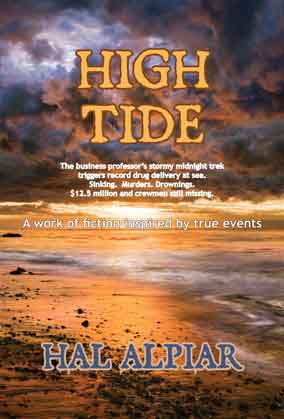Feb 05 2012
TEST Where You’re Going
Get it in writing . . .
The Hardest Business Task!
Yes, test your objectives. Yes, test your strategies. Yes, test your tactics. And, yes –first and foremost– test your concepts. It’s the only sensible way (before spending money on ideas that might sound great, but that fail to produce), to make sure your pursuits are solidly grounded and integrally connected.
~~~~~~~
What’s the hardest task in business? It’s really not hiring and firing, or funding, or maintaining operations, or making sales (though HR, finance, operations, and sales people may all want to lay claim to having the most difficult jobs). The hardest task is getting it in writing. Huh”? What’s “it”? And what’s so hard about writing? Writing what?
I believe the most challenging of all business tasks is getting your direction and contingency plans straight. (Considering widely-published SBA findings that over 90% of business failures are attributable to “poor management,” knowing where you’re going is certainly Job One for most entrepreneurs.)
Writing your objectives clearly, simply, specifically, realistically, flexibly –and with a due date attached– has proven time and again to make the difference between revenues and profits, between success and SUCCESS!
The more principals, partners, investors, advisors, managers involved, the harder the task. It becomes exponentially difficult because –to have any value– everyone involved must agree at least somewhat with every word. In other words, agreeing on a precise target is sometimes the most trying of all challenges.
Is it (your target objective) the same as your Mission or Vision Statement?
No, but it probably needs to directly reflect both.
Whatever the objectives (or goals) are that you verbalize for yourself or your business, they need to be:
A) Missions in and of themselves, and they must fit conceptually under the umbrella of your own or your company’s overall Mission Statement.
[If your objective(s) fail to measure up to your overall Mission Statement, or don’t quite fit under its umbrella, re-examine where you’re headed with things. You may need to switch gears, or direction, or timing, or desired results.]
B) Following the path of your Vision Statement.
[If this isn’t happening, redirect your focus or re-visit your Vision Statement to consider some adjustments.]
Can you make changes and still be “on-target” with your pursuits? Absolutely! Remember that flexibility (together with realistic, specific, and due-dated) is one of the key criteria for effective goal-setting. If you’re not reaching the goal you defined, be flexible enough to redefine it, or change the tactics you’re using.
# # #
FREE blog subscription: Posts RSS Feed
Hal@Businessworks.US 302.933.0116


